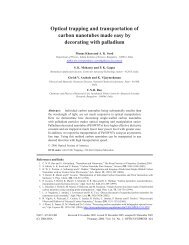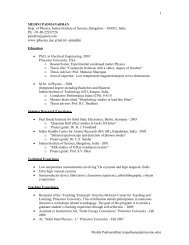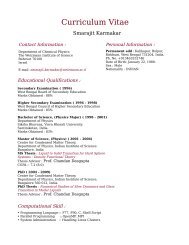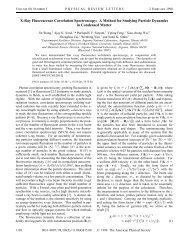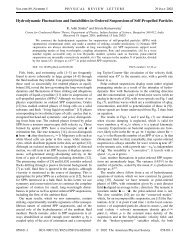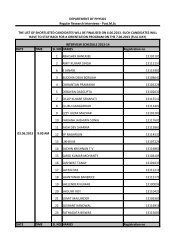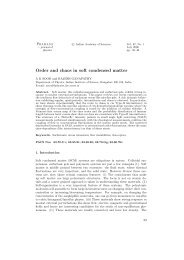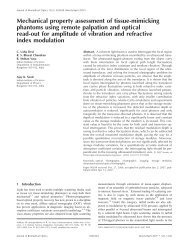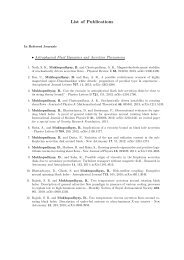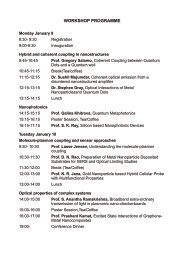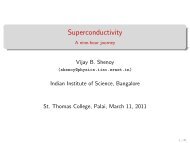Thermoelectric Properties of Fe0.2Co3.8Sb12-xTex ... - Physics
Thermoelectric Properties of Fe0.2Co3.8Sb12-xTex ... - Physics
Thermoelectric Properties of Fe0.2Co3.8Sb12-xTex ... - Physics
Create successful ePaper yourself
Turn your PDF publications into a flip-book with our unique Google optimized e-Paper software.
Suppression <strong>of</strong> localization in two dimensionally doped<br />
semiconductors at half-filling<br />
Saquib Shamim 1 , Suddhasatta Mahapatra 2 , Giordano Scapucci 2 , W. M. Klesse 2 , P.B.S.<br />
Mahapatra 1 , Michelle Y. Simmons 2 and Arindam Ghosh 1<br />
1 Department <strong>of</strong> <strong>Physics</strong>, Indian Institute <strong>of</strong> Science, Bangalore 560 012, India<br />
2<br />
Centre for Quantum Computation and Communication Technology, University <strong>of</strong> New South Wales, Sydney<br />
NSW 2052, Australia<br />
The nature <strong>of</strong> quantum states, and transport <strong>of</strong> electrons, in a two dimensional (2D) disordered solid<br />
change significantly in the presence <strong>of</strong> a background periodic potential, such as that arising from the<br />
host crystal lattice. The interplay <strong>of</strong> the electron wavelength and lattice periodicity leads to a number<br />
<strong>of</strong> exotic phenomena, in particular close to half filling, that range from collapse <strong>of</strong> scaling theory and<br />
Anderson localization, hole-mediated (Nagaoka) ferromagnetism, to new modes <strong>of</strong> quantum<br />
transport. Much <strong>of</strong> these phenomena remain unexplored experimentally, primarily due to the lack <strong>of</strong> a<br />
suitable material platform. Advances in material engineering now allow the dopants, such as<br />
phosphorus (P), confined within one atomic layer inside bulk crystals <strong>of</strong> silicon (Si) and germanium<br />
(Ge), leading to a unique two-dimensional (2D) electron system whose Fermi energy exists naturally<br />
at or very close to the center <strong>of</strong> band. Here we demonstrate that quantum interference effect in 2D<br />
Si:P and Ge:P is drastically different from conventional weakly localized 2D electron systems. This<br />
is manifested in two unexpected ways: First, the quantum correction to low temperature conductivity<br />
shows a strong weak antilocalization (WAL), in addition to the conventional weak localization (WL)<br />
behaviour, and second, a spontaneous factor <strong>of</strong> two suppression in the universal conductance<br />
fluctuations at low areal density <strong>of</strong> the dopants. We attribute these observations to the emergence <strong>of</strong><br />
new modes, called the π-Cooperons and π-Diffusons, <strong>of</strong> quantum diffusion at half-filled bands, where<br />
electrons propagate through ‘umklapp scattering’ in the presence <strong>of</strong> a nested <strong>of</strong> Fermi surface and the<br />
resulting particle-hole symmetry.



